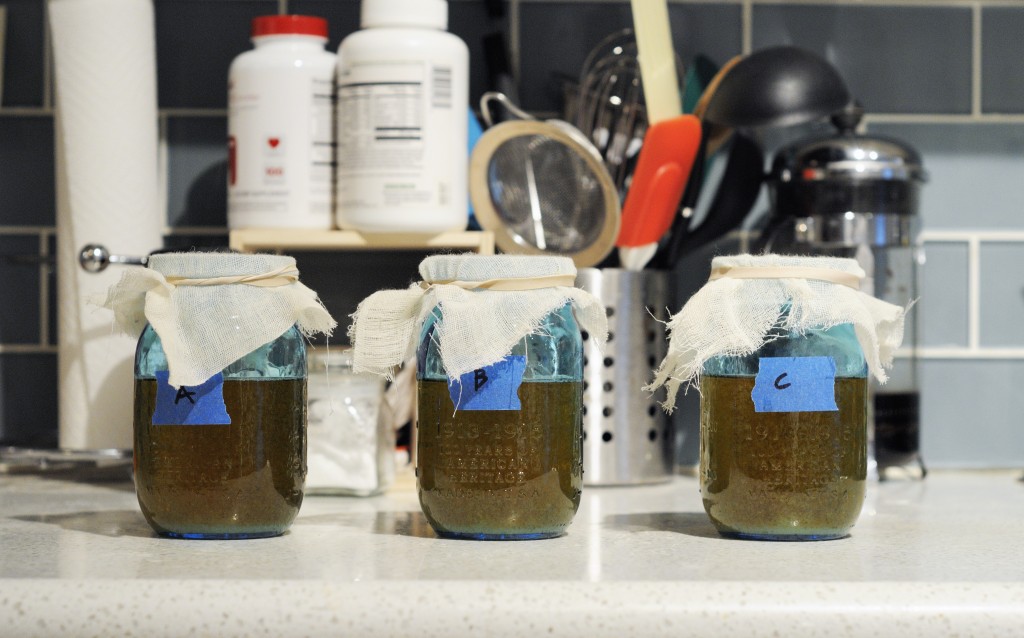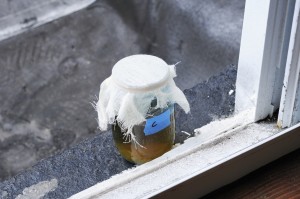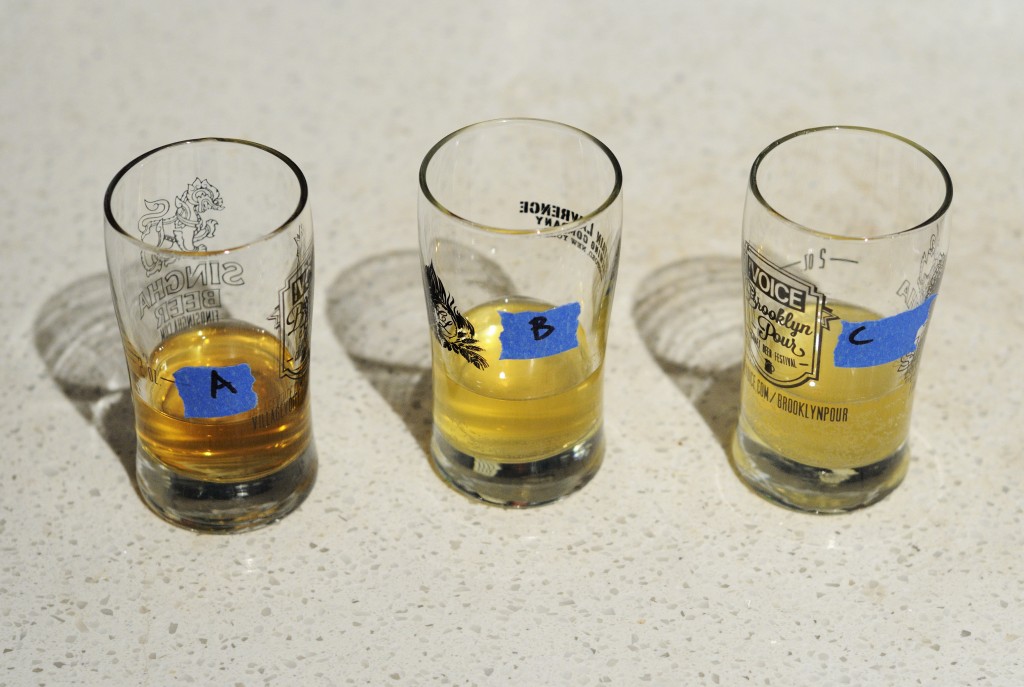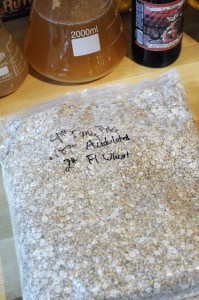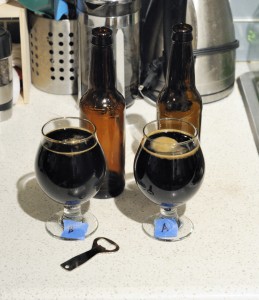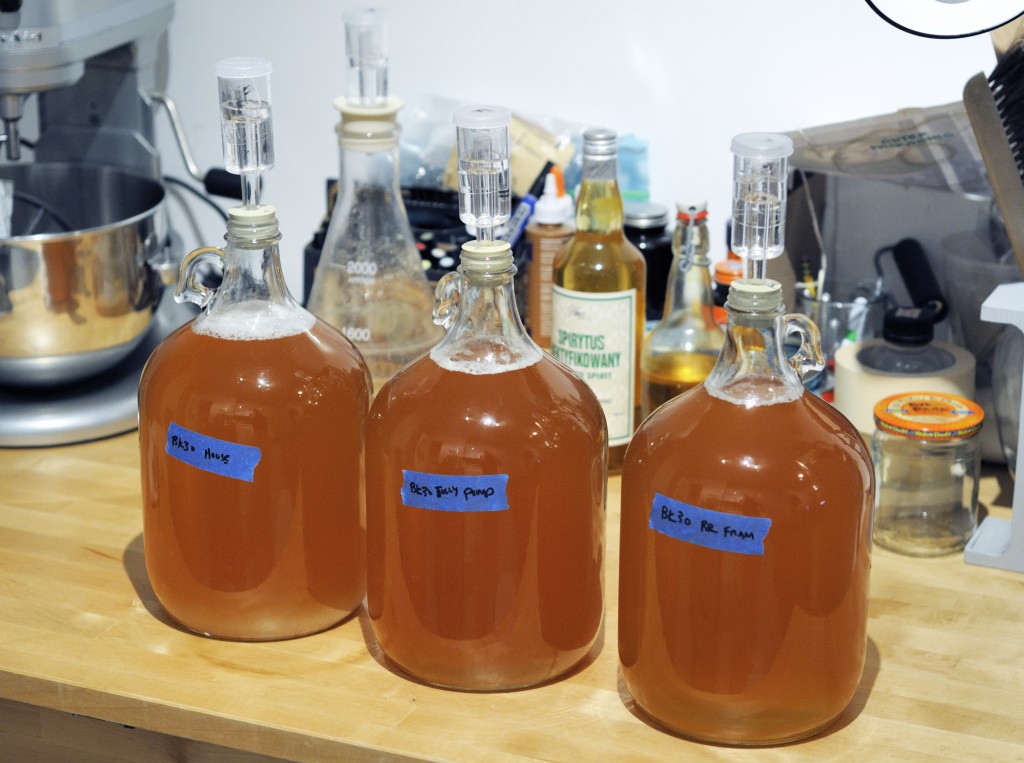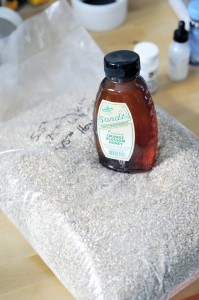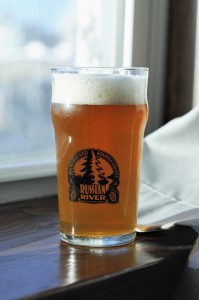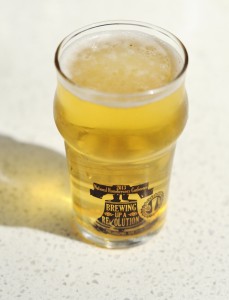 Brewing an outstanding Pilsner has been a bit of an enigma for me. I’ve done a number of Bohemian Pilsners in the past, and they always seem a bit off the mark. This time around, I decided to take a shot at brewing a crisp and hoppy German Pilsner. The goal was to produce an austerely dry beer that classically showcases the herbal and spicy notes found in classic German hop varietals and the crisp refreshing character that is a hallmark of the style. The recipe ended up quite good, although brewer error and less-than-optimal yeast management led to a beer that missed my target.
Brewing an outstanding Pilsner has been a bit of an enigma for me. I’ve done a number of Bohemian Pilsners in the past, and they always seem a bit off the mark. This time around, I decided to take a shot at brewing a crisp and hoppy German Pilsner. The goal was to produce an austerely dry beer that classically showcases the herbal and spicy notes found in classic German hop varietals and the crisp refreshing character that is a hallmark of the style. The recipe ended up quite good, although brewer error and less-than-optimal yeast management led to a beer that missed my target.
German Pilsner Recipe
Specifications:
Size: 3.25 gal
Efficiency: 83% (measured)
Attenuation: 78% (measured)
Original Gravity: 1.054 (was shooting for 1.050)
Terminal Gravity: 1.014 (measured)
Color: 3.95 SRM
Alcohol: 5.5% ABV (calculated)
Bitterness: 22.8 IBU
Malt Bill:
6 lb (96.0%) Weyermann Pilsner Malt
4 oz (4.0%) Weyermann CaraFoam
Mash Profile:
144 °F – 30m
Decoction
153°F – 30m
Decoction
168°F – 5m
Water Treatment:
Extremely Soft NYC Water
5g Gypsum (to mash)
Hopping:
20 g Hallertauer Mittelfrüher (4% AA) – 60 m
20 g Hallertauer Mittelfrüher (4% AA) – 10 m
80 g Hallertauer Mittelfrüher (4% AA) – Whirlpool 15 m
Kettle Additions:
0.5 ea Whirlfloc Tablets (Irish moss) – added during boil, boiled 15 m
.5 tsp Wyeast Nutrient – added during boil, boiled 10 m
Yeast:
White Labs WLP830 German Lager – Starter on stirplate to achieve 1.5 million cells per milliliter of wort per degree Plato. Use Mr. Malty to determine proper starter sized based on age of yeast package. Pitch into 44°F wort and allow to free rise to 48°F. Raise temp to 50°F after 2 days. As fermentation begins to slow, raise temperature to 62°F. Once complete, chill 5°F per day until 32°F is achieved. Lager at 32°F 6-weeks.
Tasting Notes:
Judged as a BJCP 2A. German Pilsner.
Aroma (6/12):
Medium grassy hop aroma with some herbal and slightly spicy qualities. Malt aroma is low, but has a pleasant slightly toasty quality. Soft malt is a touch sweet. No DMS or diacetly. Slight hint of alcohol warmth. Low amount of green apple (acetaldehyde).
Appearance (2/3):
Straw colored and crystal clear. Medium white head that quickly dissipates. Low retention.
Flavor (11/20):
Moderate grainy malt with a touch of honey-like sweetness. Firmly bitter with some definite mineral notes. Hop flavor is medium-low with some herbal character. Nice crisp dry finish that is the hallmark of the style. A touch of alcohol. Some yeast fruitiness.
Mouthfeel (4/5):
Light bodied and crisp. Moderate to high carbonation.
Overall Impression (7/10)
A very refreshing beer overall. There are some yeast derived flavors (slight ester, green apple, alcohol) that detract from the overall drinking experience. This slightly off fermentation is tough to not notice in such a simple and austere beer. Beer could benefit from additional lagering and the use of a healthier pitch of yeast. Additionally, during the decoction process, the main mash temperature dropped quit low, likely degrading certain foam positive proteins and causing deficient foam retention.
Good (29/50)



